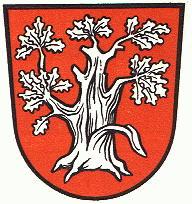Hofgeismar (kreis): Difference between revisions
Jump to navigation
Jump to search
Knorrepoes (talk | contribs) m (Text replace - "'''Origin/meaning :'''<br/>" to "====Origin/meaning====") |
Knorrepoes (talk | contribs) m (Text replace - "|width="15%"|50 px|right |} " to "|width="15%"|50 px|right |}<seo title="Wappen, Gemeindewappen" /> ") |
||
| Line 3: | Line 3: | ||
|width="70%" align="center" |'''Heraldry of the World<br/>Civic heraldry of [[Germany]] - [[Deutsche Wappen|Deutsche Wappen (Gemeindewappen/Kreiswappen)]]''' | |width="70%" align="center" |'''Heraldry of the World<br/>Civic heraldry of [[Germany]] - [[Deutsche Wappen|Deutsche Wappen (Gemeindewappen/Kreiswappen)]]''' | ||
|width="15%"|[[File:Germany.jpg|50 px|right]] | |width="15%"|[[File:Germany.jpg|50 px|right]] | ||
|} | |}<seo title="Wappen, Gemeindewappen" /> | ||
'''HOFGEISMAR (HOG)''' | '''HOFGEISMAR (HOG)''' | ||
Revision as of 19:18, 5 November 2012
| Heraldry of the World Civic heraldry of Germany - Deutsche Wappen (Gemeindewappen/Kreiswappen) |
HOFGEISMAR (HOG)
State : Hessen
Incorporated into : 1973 Kassel
Origin/meaning
The arms were granted in 1952.
The district choose to use no historical symbols in the arms, but adopted an old oak tree. The tree symbolises the Rheinhardswald, an old forest in the district, in which many trees have bizarre shapes. The H. Bonifacius visited the forest in 723 and cut down the holy Donar-oak. He thus started Christianity in the area. The Reinhardswald belongs to Hofgeismar since 1463. The colours are taken from the lion of Hessen.
Literature : Stadler, K. : Deutsche Wappen - Bundesrepublik Deutschland. Angelsachsen Verlag, 1964-1971, 8 volumes.

